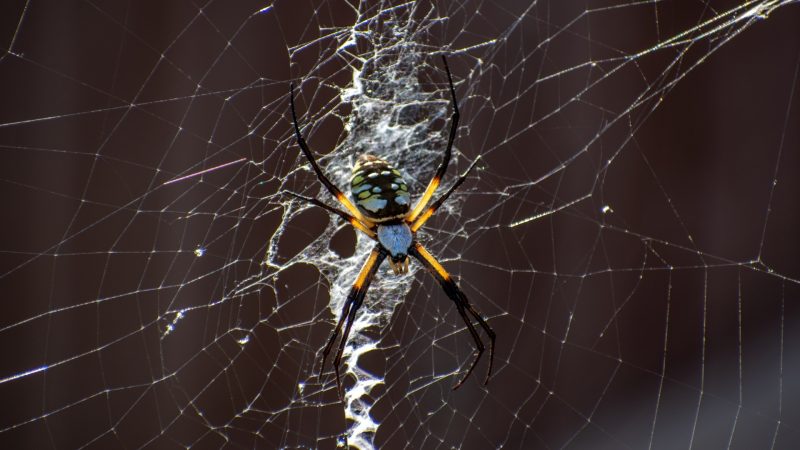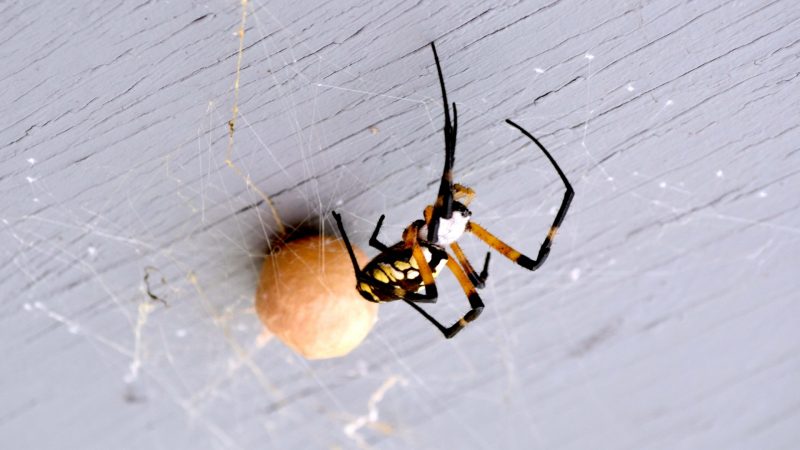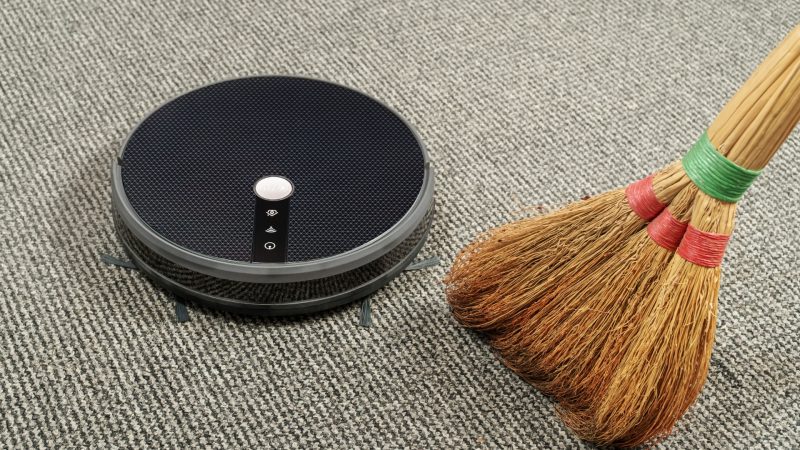It can be frightening to discover that you have spiders, especially enormous ones that build large webs, such as zipper spiders. These spiders look scary from a distance and close-up, but many people don’t know much about them.
What are zipper spiders, and how to control them? Zipper spiders are yellow and black spiders known for their large webs sporting zig-zag patterns in their centers. These spiders aren’t dangerous and will avoid humans if possible. They are easily controlled with pesticides, cleaning, and some persistence.
In this article, we’ll cover basic information about zipper spiders, such as what they look like, their size, diet, physical abilities, and whether they have aggressive tendencies that can cause them to bite. This article will also provide information on how to control them.
What Do Zipper Spiders Look Like?

Zipper spiders have complex yellow and black patterns across their abdomens and their legs; this could be mostly black with some yellow or mostly yellow with some black. White colors are also commonly seen as tertiary coloring.
Zipper spiders have many names because of their prevalence throughout North America, including Canada, U.S., and Mexico.
The most commonly accepted name is the yellow garden spider, but writing spider is also a common name for them. Other names for the species are zig-zag spiders, zipper spiders, and corn spiders.
How Big Do Zipper Spiders Get?
Female zipper spiders grow to sizes of an inch (30 mm) or bigger, while males are much smaller, only 8-10 mm. Because these spiders prefer to spin their webs outdoors, the huge species that frequently alarm people are female spiders.
How Long Do Zipper Spiders Live?
Zipper spiders typically live for one year. The spiders hatch in the fall and live until the following winter. Females usually die after the first hard frost but can live for a few years if the winters are mild. Males usually die right after mating.
Can Zipper Spiders Jump?
Zipper spiders can’t jump in the conventional sense, but they might look like they’re jumping if they fall out of their webs. Most frequently, this happens when insect prey trespass into their intricate webs, giving the appearance of ‘jumping.’
What Do Zipper Spiders Eat?
Zipper spiders eat a variety of insects such as flies, grasshoppers, aphids, and even wasps on occasion. Small lizards who visit a zipper spider’s web are also on their diet.
When prey comes onto the spider’s web and touches the zig-zag portion, it is extremely sticky and prevents the prey from moving. This is when the zipper spider drops from above and bites the prey, killing it instantly. Then, the spider will spin a cocoon around the prey and leave it to eat later.
About Zipper Spiders’ Webs

Zipper spiders are most well-known for their large, intricate webs. They prefer to place it in open areas such as between trees and even off the eaves of houses. These webs have a signature ‘zig-zag’ pattern in the center, called a stabilimentum. The purpose of this zig-zag is widely debatable. Some believe it prevents birds from flying through the web, and others believe it attracts prey.
It is very rare to see a zipper spider away from its web unless it is looking for a new location to weave one. A fun fact about these webs is that zipper spiders can eat and respin their webs as often as every night. It’s speculated they get some nutritional value from minute biological material on the web.
Zipper Spider Life Cycle

Female zipper spiders lay eggs in the late summer to early fall, and they resemble large brown sacks on zipper spider webs. In the early spring, up to 1,000 spiderlings can hatch from a single egg sac. Unfortunately, wasps, birds, and even other spiders prey on zipper spiderlings. This effectively culls a single brood of zipper spiders to a few dozen at most.
Until the spiderlings reach maturity in the summer, they have a black-and-white coloring that can blend into the appearance of a web. Male spiders will remain small even as they reach maturity.
Are Zipper Spiders Aggressive?
Zipper spiders aren’t aggressive to humans or large animals, like dogs and cats, and will avoid them at all possible. They have little interest in bothering large animals and would rather live on their web, waiting for unsuspecting prey to stray into it.
Do Zipper Spiders Bite?
Zipper spiders can bite, but they only bite humans or domestic pets when threatened or provoked. They usually wait for prey to wander onto their webs and wrap them in cocoons for later consumption up to 6 hours later.
Are Zipper Spiders Poisonous?
Zipper spiders do possess venom that’s fatal to insects and lizards. According to Penn State University, its venom is generally no worse than a bee sting and isn’t considered particularly dangerous to people.
When a zipper spider bites a human, the bite is painful, red, and swollen to the touch. However, the bite shouldn’t escalate any further than that, and most adults will be fine after a few days.
In rare cases, a bitten person may be allergic to zipper spider venom, which triggers anaphylactic shock and hives like other allergies.
How to Get Rid of Zipper Spiders?
Zipper spiders are generally harmless to humans and our pets, but the areas where zipper spiders set up their webs can be problematic – in doorways, porches, or other areas of high traffic. In the winter, they’ve been known to enter homes in search of increasingly scarce prey.
This can lead to frequent run-ins with the spiders if they live in the area. So naturally, you’d want to get rid of them so you can have peace of mind.
Getting rid of zipper spiders is deceptively easy. The spiders depend on their webs to survive. So consistently knocking down webs you can find around your home will force the spider to relocate in search of a more secure location to put up its web.
How to Prevent Zipper Spider Infestation?

To prevent zipper spiders from congregating around or inside your house, there are a few things you can do to make life difficult for them. Try these prevention measures:
- All cracks in walls, windows, doors, and other entryways should be caulked.
- Caulk all exterior walls and foundations. Spiders and other bugs often get in through these little-known areas.
- Make sure all window screens are secure and intact. If you open your window with tears or rips on the screen, spiders and other pests can get in.
- Regularly and thoroughly clean your home with a vacuum or broom. This can minimize the number of places spiders can hide and nest.
- Install yellow or sodium vapor bulbs. These don’t attract as many insects as conventional lights and can make your home a less abundant buffet for spiders.
Zipper Spider Pest Control Product Review
There are a few products that can help you get rid of spiders. According to the University of Kentucky, cyfluthrin, deltamethrin, and silica gel are effective ways to eliminate spiders in and around the home.
BioAdvanced Vegetable and Garden Insect Spray, Concentrated Insecticide, 32-Ounce
- INSECT KILLER: Use this spray to kill insects by contact...
- PROTECTS FRUIT & VEGETABLES: Keep your gardening produce...
- EASY APPLICATION: Mix and apply this plant spray concentrate on...
- RAINPROOF PROTECTION: Rainproof plant protection within one hour...
- EXTENSIVE COVERAGE: With 32 ounces of insect killer concentrate,...
- INSECT KILLER: Use this spray to kill insects by contact...
- PROTECTS FRUIT & VEGETABLES: Keep your gardening produce...
- EASY APPLICATION: Mix and apply this plant spray concentrate on...
- RAINPROOF PROTECTION: Rainproof plant protection within one hour...
- EXTENSIVE COVERAGE: With 32 ounces of insect killer concentrate,...
This product from Amazon contains cyfluthrin, which eliminates many of the insects that zipper spiders feed on. As an added benefit, this will keep any of your vegetable or fruit plants bug-free.
Simply spray the product onto plants that zipper spiders tend to use as anchorage for their webs, and it will deter them. Spray directly onto the spiders and their webs for quick elimination.
Sale
Rockwell Labs - CXID032 - Cimexa Dust - Insecticide - 4 oz
- For control of bed bugs, fleas, ticks, lice, roaches, ants,...
- Kills bed bug adults, nymphs and nymphs hatched from dusted eggs...
- Labeled for treating cracks, crevices, voids, mattresses,...
- Odorless, non-staining desiccant structure will not absorb water...
- Remains viable for up to 10 years when undisturbed
- For control of bed bugs, fleas, ticks, lice, roaches, ants,...
- Kills bed bug adults, nymphs and nymphs hatched from dusted eggs...
- Labeled for treating cracks, crevices, voids, mattresses,...
- Odorless, non-staining desiccant structure will not absorb water...
- Remains viable for up to 10 years when undisturbed
This is another product from Amazon. It is a spray that contains specially formulated silica, which acts as a desiccant. This dries out and kills spiders and other common pests.
It can be sprayed directly onto zipper spider webs for rapid treatment, but it’s very valuable as a deterrent as well. Spray onto the cracks and crevices around your home to prevent the creepy crawlies from coming in.
Sale
Delta Dust Multi Use Pest Control Insecticide Dust, 1 LB
- Delta Dust Bed Bug Insecticide - 1 lb.
- Yield: 1 lb. of Delta Dust covers about 2,000 sq.ft.
- Target Pest: Ants, Bed Bugs, Boxelder Bugs, Cockroaches,...
- Active Ingredient: Deltamethrin, 0.05%
- Cannot ship to NY or CT.
- Delta Dust Bed Bug Insecticide - 1 lb.
- Yield: 1 lb. of Delta Dust covers about 2,000 sq.ft.
- Target Pest: Ants, Bed Bugs, Boxelder Bugs, Cockroaches,...
- Active Ingredient: Deltamethrin, 0.05%
- Cannot ship to NY or CT.
The last product, also from Amazon, is DeltaDust, containing deltamethrin as its active ingredient. This product serves a similar function as the last entry, but it acts like an outright pesticide that kills spiders and other bugs on contact.
Related: Outdoor Spider Control: 7 Best Outdoor Spider Sprays Review
List of Sources
Baker, J. (2019). Black and Yellow Garden Spider. NC State Extension.
Jacobs, S. (2018). Yellow Garden Spider. PennState Extension.
Griffith, T. B., Gillett-Potter, M. F. (2018). Eliminating Spiders Around Homes and Buildings. University of Kentucky.
- Bed Bug Surge 2025: How to Detect, Prevent, and Safely Eliminate Infestations in Top U.S. Cities - June 18, 2025
- Asian Needle Ants Invade US Homes: 2025 Guide to Identification, Risks, and Effective Control - June 11, 2025
- New World Screwworm Alert: How US Livestock Owners Can Prevent Outbreaks and Protect Herds [Summer 2025 Update] - June 8, 2025



